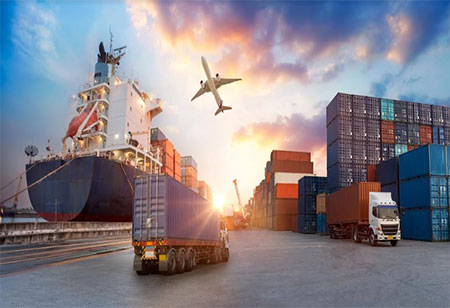
Shipping containers have been fundamental to the global supply chain for many years, and their importance has not waned in the post-COVID era. In fact, their role has become even more significant as the world adapted and evolved in the face of pandemic-driven disruptions. This article will delve into the multifaceted roles shipping containers play in today’s supply chain industry.
1. Standardization
Shipping containers offer a high degree of standardization, which facilitates smooth intermodal transport. This standardization meant that during the pandemic, when travel restrictions and port congestion were rife, 20ft shipping containers could still be transferred seamlessly from ships to trucks to trains.
In the post-COVID era, the uniformity of shipping containers continues to simplify operations at ports and logistics hubs worldwide. For example, the massive container ports in Shanghai or Rotterdam handle thousands of these standardized units daily, supporting the smooth flow of global trade.
2. Driving Global Trade
Throughout the pandemic, shipping containers proved essential for global trade, moving everything from medical supplies to home-office equipment. Despite the upheaval, container shipping remained the lifeblood of global commerce.
As industries navigate the post-COVID world, these large metal boxes continue to facilitate the transportation of a vast array of goods, keeping the wheels of global trade turning. A shipment of French wine to New York or Australian iron ore to China most likely occurs in a shipping container.
3. Efficiency And Cost-effectiveness
The pandemic highlighted the value of efficiency and cost-effectiveness, as companies everywhere tightened their belts and sought ways to maintain operations. Shipping containers, with their ability to transport large quantities of goods, helped keep transportation costs manageable.
Now, as economies rebound, this efficiency remains as crucial as ever. Companies can transport numerous goods in one go, thereby driving down the per-unit cost and ensuring economies of scale.
4. Ensuring Safety And Security
Throughout COVID-19, shipping containers offered a secure environment for goods, protecting them from contamination—a factor of paramount importance when moving medical supplies or personal protective equipment.
In the post-COVID era, the safety and security of these containers remain essential, particularly for high-value goods. Their sealed environment continues to prevent theft and protect goods from harsh environmental conditions during transport.
5. Digitization And IoT
The pandemic accelerated the shift toward digitalization in the logistics sector. Many companies adopted IoT technologies to improve visibility and manage potential disruptions more effectively. Shipping containers equipped with IoT devices offered real-time tracking and cargo monitoring during this chaotic time.
As industries move further into the post-COVID era, this trend shows no signs of slowing down. The continued adoption of smart containers can provide unparalleled supply chain transparency.
6. Sustainability
Even as the pandemic raged, the fight against climate change continued. The shipping industry explored practices such as slow steaming and increased use of biofuels to reduce emissions.
In the post-COVID era, the focus on sustainable shipping practices persists. Modifications to container designs are being considered to reduce their environmental impact, such as the use of sustainable materials and energy-efficient refrigeration units in reefer containers.
7. Shipping Container Architecture
During the pandemic, the use of shipping containers expanded beyond traditional logistics roles. They were repurposed into makeshift hospitals or testing centers in many regions.
Today, this trend continues in the post-COVID era with shipping container architecture on the rise. For example, container homes and offices offer an innovative, sustainable, and often cost-effective alternative to traditional construction methods.
8. Emergency Response And Storage
The flexibility of shipping containers became evident during the COVID-19 pandemic, as they were used for transporting relief materials or serving as temporary storage facilities.
Their role remains critical in the post-COVID era, where they provide fast, effective solutions in post-disaster situations, underlining their importance beyond traditional supply chain functions.
9. Cold Chain Logistics
COVID-19 highlighted the importance of cold chain logistics, especially for transporting vaccines at ultra-low temperatures. Specialized refrigerated containers, or reefers, were crucial for this purpose.
Today, reefers continue to play a key role, particularly for pharmaceuticals and perishable food products, ensuring that these goods reach their destination in optimal condition.
10. Smart Containers And Automation
The future of shipping containers lies in smart technology and automation. During the pandemic, smart containers offered real-time updates about their location and cargo status, providing a level of security and visibility that was more important than ever.
In the post-pandemic era, automation and smart containers are set to transform the supply chain further. Automated systems for loading and unloading containers are increasingly common, enhancing supply chain efficiency.
The Takeaway
Shipping containers have evolved from being simple, standardized units for transporting goods to playing an integral role in global trade, digitization, sustainability, and more. Their importance in the supply chain has only been reinforced in the post-COVID era, as they continue to support the complex web of global commerce and logistics in an ever-changing world.
We use cookies to ensure you get the best experience on our website. Read more...